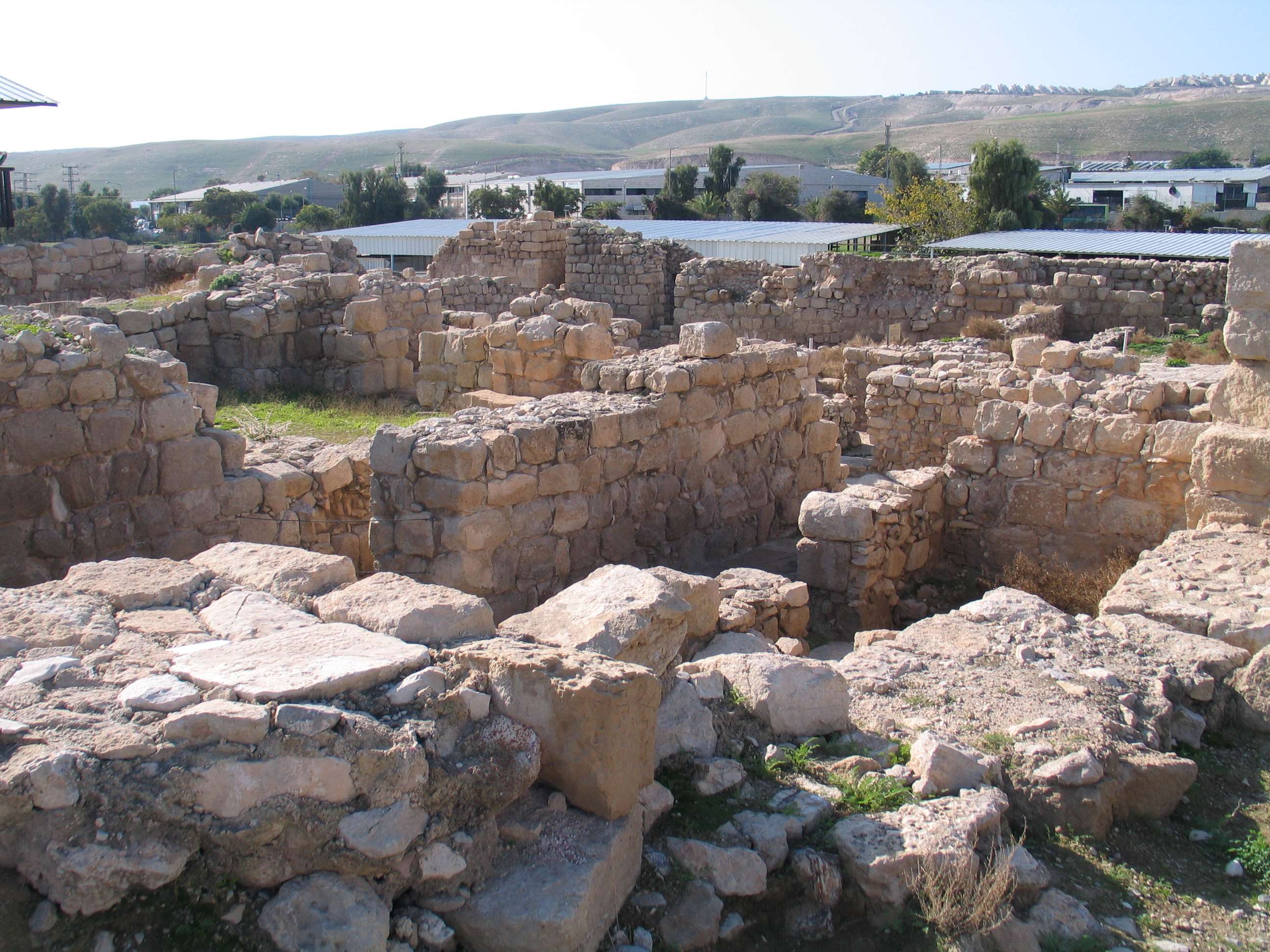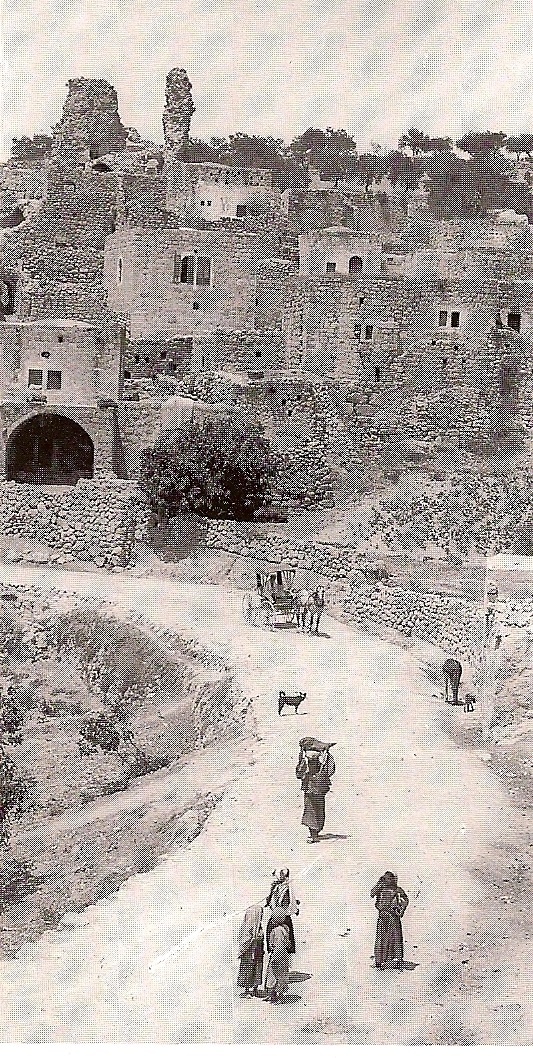|
Monastery Of St. Theoctistus
Venerable Theoctistus of Palestine (also Theoktistos) was an associate of Euthymius the Great. He was an ascetic who lived in a nearby cell at the Pharan lavra. Ascetic life About five years after Euthymius arrived, they went into the desert for Great Lent, and found in a wadi a large cave where they remained praying in solitude for some time. Eventually shepherds from Bethany discovered them, and people from the area began to visit seeking spiritual guidance and bringing food. The monks then built a church. When other monks came seeking instruction, Euthymius and Theoctistus built a lavra over the cave church. Theoctistus became hegumen of the monastery. Euthymius is credited with establishing several monasteries, including that of Theoctistus. Death and commemoration Theoctistus died at an advanced age in 451 and is commemorated on 3 September. References Further reading *{{cite book , title=The Lives of the Saints, url=https://archive.org/details/TheLivesOfTheSaintsV01/, fi ... [...More Info...] [...Related Items...] OR: [Wikipedia] [Google] [Baidu] |
Venerable
The Venerable (''venerabilis'' in Latin) is a style, a title, or an epithet which is used in some Western Christian churches, or it is a translation of similar terms for clerics in Eastern Orthodoxy and monastics in Buddhism. Christianity Catholic In the Catholic Church, after a deceased Catholic has been declared a Servant of God by a bishop and proposed for beatification by the Pope, such a servant of God may next be declared venerable (" heroic in virtue") during the investigation and process leading to possible canonization as a saint. A declaration that a person is venerable is not a pronouncement of their presence in Heaven. The pronouncement means it is considered likely that they are in heaven, but it is possible the person could still be in purgatory. Before one is considered venerable, one must be declared by a proclamation, approved by the Pope, to have lived a life that was "heroic in virtue" (the theological virtues of faith, hope, and charity and the cardinal virt ... [...More Info...] [...Related Items...] OR: [Wikipedia] [Google] [Baidu] |
Euthymius The Great
Euthymius the Great (377 – 20 January 473) was an abbot in Palestine. He is venerated in both Roman Catholic and Eastern Orthodox Churches. Euthymius' ''vita'' was written by Cyril of Skythopolis, who describes him as the founder of several monasteries in the Judaean desert, while remaining a solitary monk in the tradition of Egyptian monasticism. He nevertheless played a decisive role in helping the decisions of the Council of Chalcedon (451) prevail in Jerusalem, in spite of the majority of the monks in the region opposing it. Life Euthymius was born in Melitene in Lesser Armenia, in a pious family of noble birth. According to Christian tradition, his parents, Paul and Dionysia, had prayed for a son at the church of Saint Polyeuctus in Melitene. When the child was born, they named him ''Euthymius'', meaning "good cheer". Euthymius was educated by Bishop Otreius of Melitene, who afterwards ordained him and placed him in charge of all the monasteries in the Diocese of Me ... [...More Info...] [...Related Items...] OR: [Wikipedia] [Google] [Baidu] |
Lavra
A lavra or laura ( el, Λαύρα; Cyrillic: Ла́вра) is a type of monastery consisting of a cluster of cells or caves for hermits, with a church and sometimes a refectory at the center. It is erected within the Orthodox and other Eastern Christian traditions. The term is also used by some Roman Catholic communities. The term in Greek initially meant a narrow lane or an alley in a city.. History Byzantine laura/lavra From the fifth century the Greek term ''laura'' could refer specifically to the semi-eremitical monastic settlements of the Judaean Desert, where lauras were very numerous. The first lauras of Palestine were founded by Chariton the Confessor (born 3rd century, died ca. 350): the Laura of Pharan (now Wadi Qelt) northeast of Jerusalem, the Laura of Douka on the Mount of Temptation west of Jericho, and Souka Laura or Old Laura in the area of Tuqu' in Wadi Khureitun. Saint Euthymius the Great (377–473) founded one of the early lauras in fifth-century Palestine. The ... [...More Info...] [...Related Items...] OR: [Wikipedia] [Google] [Baidu] |
Wadi
Wadi ( ar, وَادِي, wādī), alternatively ''wād'' ( ar, وَاد), North African Arabic Oued, is the Arabic term traditionally referring to a valley. In some instances, it may refer to a wet (ephemeral) riverbed that contains water only when heavy rain occurs. Etymology The term ' is very widely found in Arabic toponyms. Some Spanish toponyms are derived from Andalusian Arabic where ' was used to mean a permanent river, for example: Guadalcanal from ''wādī al-qanāl'' ( ar, وَادِي الْقَنَال, "river of refreshment stalls"), Guadalajara from ''wādī al-ḥijārah'' ( ar, وَادِي الْحِجَارَة, "river of stones"), or Guadalquivir, from ''al-wādī al-kabīr'' ( ar, اَلْوَادِي الْكَبِير, "the great river"). General morphology and processes Wadis are located on gently sloping, nearly flat parts of deserts; commonly they begin on the distal portions of alluvial fans and extend to inland sabkhas or dry lakes. In basin and r ... [...More Info...] [...Related Items...] OR: [Wikipedia] [Google] [Baidu] |
Bethany
Bethany ( grc-gre, Βηθανία,Murphy-O'Connor, 2008, p152/ref> Syriac: ܒܝܬ ܥܢܝܐ ''Bēṯ ʿAnyā'') or what is locally known as Al-Eizariya or al-Azariya ( ar, العيزرية, " laceof Lazarus"), is a Palestinian town in the West Bank. The name al-Eizariya refers to the New Testament figure Lazarus of Bethany, who according to the Gospel of John, was raised from the dead by Jesus. The traditional site of the miracle, the Tomb of Lazarus, in the city is a place of pilgrimage. The town is located on the southeastern slope of the Mount of Olives, less than from Jerusalem. According to the Palestinian Central Bureau of Statistics, it is the second largest Palestinian city in the Jerusalem Governorate (not including East Jerusalem, which is under Israeli control), with a population of 17,606 inhabitants. Being mostly in Area C, it is controlled by the Israeli military rather than the Palestinian Authority. Name Al-Eizariya The name Al-Eizariya ( ar, العيزري� ... [...More Info...] [...Related Items...] OR: [Wikipedia] [Google] [Baidu] |
Hegumen
Hegumen, hegumenos, or igumen ( el, ἡγούμενος, trans. ), is the title for the head of a monastery in the Eastern Orthodox and Eastern Catholic Churches, similar to the title of abbot. The head of a convent of nuns is called a hegumenia or igumeni ( el, ἡγουμένη). The term means "the one who is in charge", "the leader" in Greek. Overview Initially the title was applied to the head of any monastery. After 1874, when the Russian monasteries were reformed and classified into three classes, the title of ''hegumen'' was reserved only for the lowest, third class. The head of a monastery of the second or first class holds the rank of archimandrite. In the Greek Catholic Church, the head of all monasteries in a certain territory is called the ''protohegumen''. The duties of both hegumen and archimandrite are the same, archimandrite being considered the senior dignity of the two. In the Russian Orthodox Church the title of Hegumen may be granted as an honorary title to ... [...More Info...] [...Related Items...] OR: [Wikipedia] [Google] [Baidu] |
Hans Dieter Betz
Hans Dieter Betz (born 21 May 1931, Lemgo, Germany) is an American scholar of the New Testament and Early Christianity at the University of Chicago. He has made influential contributions to research on Paul's Letter to the Galatians, the Sermon on the Mount and the Greco-Roman context of Early Christianity. Biography Hans Dieter Betz was born and raised in Germany.Betz, Hans Dieter. ''The Sermon on the Mount. A Commentary''. Minneapolis: Fortress Press, 1995. He received his theological education at Bethel and Mainz in Germany, and at Cambridge in England. Having studied with Herbert Braun, he graduated as Doctor of Theology and "Habilitation" at Mainz (1957, 1966); Dr. h.c. Erlangen. His list of scholarly publications includes New Testament literature, esp. on Paul's letters, as well as on Hellenistic history of religions, writing in English and German. He served also as editor of the lexica "Religion in Geschichte und Gegenwart" (4th ed. 1998-2005) and "Religion Past and Present" ... [...More Info...] [...Related Items...] OR: [Wikipedia] [Google] [Baidu] |
Eberhard Jüngel
Eberhard Jüngel (5 December 1934 – 28 September 2021) was a German Lutheran theologian. He was Emeritus Professor of Systematic Theology and the Philosophy of Religion at the Faculty of Protestant Theology of the University of Tübingen. Life and work Jüngel was born in Magdeburg on 5 December 1934 as the son of the electrician Kurt Jüngel and his wife Margarete née Rothemann, into a non-religious home. After World War II, Magdeburg was located in the German Democratic Republic (GDR). He remembered that his decision to pursue a career in theology was met with "the concerned astonishment" of his mother and "the resolute refusal" of his father.' However, it was precisely the communist milieu of his youth which led him to Christian theology: "That was the discovery of the church as the one place within a Stalinist society where one could speak the truth without being penalized." Jüngel studied undergraduate theology at the (Theological Seminary of East Berlin). During this ... [...More Info...] [...Related Items...] OR: [Wikipedia] [Google] [Baidu] |
Year Of Birth Missing
A year or annus is the orbital period of a planetary body, for example, the Earth, moving in its orbit around the Sun. Due to the Earth's axial tilt, the course of a year sees the passing of the seasons, marked by change in weather, the hours of daylight, and, consequently, vegetation and soil fertility. In temperate and subpolar regions around the planet, four seasons are generally recognized: spring, summer, autumn and winter. In tropical and subtropical regions, several geographical sectors do not present defined seasons; but in the seasonal tropics, the annual wet and dry seasons are recognized and tracked. A calendar year is an approximation of the number of days of the Earth's orbital period, as counted in a given calendar. The Gregorian calendar, or modern calendar, presents its calendar year to be either a common year of 365 days or a leap year of 366 days, as do the Julian calendars. For the Gregorian calendar, the average length of the calendar year (the mea ... [...More Info...] [...Related Items...] OR: [Wikipedia] [Google] [Baidu] |
451 Deaths
__NOTOC__ Year 451 ( CDLI) was a common year starting on Monday (link will display the full calendar) of the Julian calendar. At the time, it was known as the Year of the Consulship of Marcianus and Adelfius (or, less frequently, year 1204 ''Ab urbe condita''). The denomination 451 for this year has been used since the early medieval period, when the Anno Domini calendar era became the prevalent method in Europe for naming years. Events By place Europe * Spring – Attila gathers his vassals— Bastarnae, Gepids, Heruls, Ostrogoths, Rugians, Scirians and Thuringians (among others), and smashes through Germany, causing widespread panic and destruction. He arrives in Belgica with an army (50,000 men) and crosses the Rhine. * April 7 – Attila's forces invade Gaul and sack Metz. The major cities of Strasbourg, Worms, Mainz, Trier, Cologne, Reims, Tournai, Cambrai, Amiens and Beauvais are destroyed by the Huns. * Eudocia, daughter of Emper ... [...More Info...] [...Related Items...] OR: [Wikipedia] [Google] [Baidu] |





